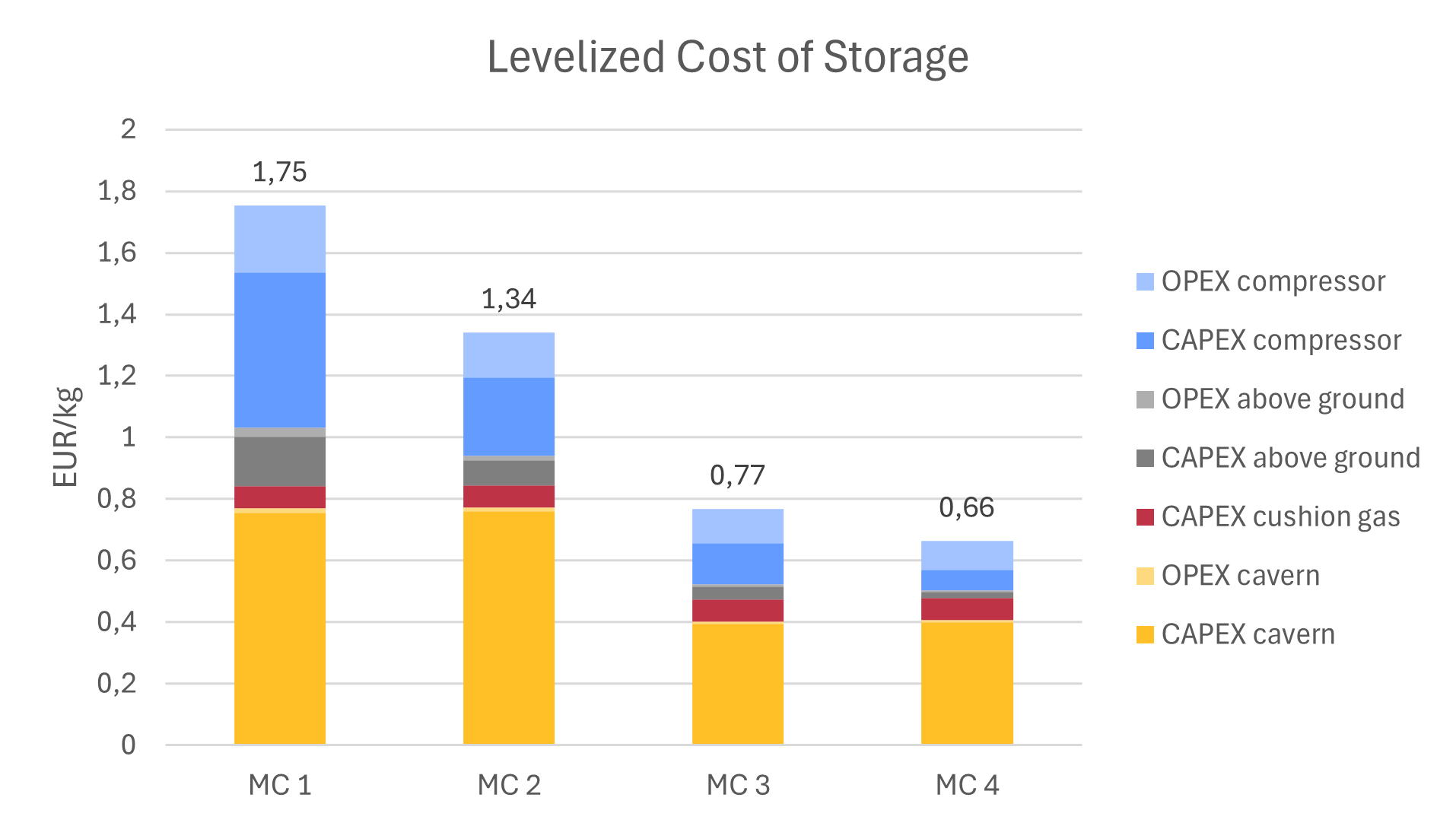
The cost of storing hydrogen in underground salt caverns could be between €0.66 to €1.75/kg, based on the amount of hydrogen stored and depending on technical and economic parameters. This is shown by a new EWI analysis based on an estimate of the investment and operating costs. Storage costs could, therefore, account for up to a quarter of the total costs for the provision of hydrogen. In a European comparison, Germany has the greatest potential for hydrogen storage due to the geological conditions for salt caverns, i.e. underground, artificial caves in salt formations. However, there are wide ranges in the forecast demand and gaps in the current regulatory framework.
The analysis “The importance of hydrogen storage – An analysis of demand, potential and costs” by the Institute of Energy Economics at the University of Cologne (EWI) discusses these and other aspects of hydrogen storage, focusing on salt caverns. The analysis was funded by the Gesellschaft zur Förderung des Energiewirtschaftlichen Instituts an der Universität zu Köln e. V.
An evaluation of energy system scenarios shows a hydrogen storage requirement of up to 3 TWh for Germany by 2030. The required storage capacity could increase to more than 100 TWh by 2045. The studies analyzed show a wide range of demand. However, the rededication of salt caverns, where natural gas is currently stored, only results in a storage potential of approx. 30 TWh, meaning that constructing new salt caverns could also become necessary. As planning and constructing a new storage facility can take up to 10 years, expansion targets should be set promptly, and a legal framework created to cover the forecast demand.
Salt caverns prove to be particularly advantageous for storing hydrogen due to their geological and chemical properties, high injection and withdrawal rates and low levels of impurities in the stored gas. The EWI analysis shows that the storage capacity of a salt cavern with typical measurements for Germany is between 35 and 140 GWh. Accordingly, numerous caverns are needed to cover the required storage capacity.
Based on an estimate of the investment and operating costs of a salt cavern, the EWI analysis shows that the levelized cost of storage could be between €0.66/kg and €1.75/kg in relation to the discharged amount of hydrogen under mentioned assumptions. The results are influenced by the operating mode and thus the annual number of cycles. With low capacity utilization, the storage costs could rise to up to €3.50/kg; if the hydrogen is completely stored and withdrawn more frequently, the costs could fall to around €0.45/kg. With hydrogen production costs of approx. 3 €/kg to 4 €/kg in the future energy system, which were determined in an earlier EWI analysis, storage thus represents a relevant cost factor.

“Salt caverns could play a major role in a future hydrogen market in Germany, both from a system perspective and in terms of costs. At around €1/kg, their storage costs are quite relevant compared to hydrogen production and import costs,” says Dr. Ann-Kathrin Klaas, Project Lead in the Research Area Energy Commodities at EWI, who authored the study with David Schlund, Jan Hendrik Kopp, and Meike Vey.
Both investment and operating costs, as well as storage revenues, are decisive for economic viability and are influenced by the regulatory framework. A major challenge in the development of regulation for hydrogen storage is the high level of dynamism and uncertainty during the market ramp-up. Continuous monitoring and possible time limits on market interventions could enable an efficient response to changing market environments. “In addition, an integrated system approach is recommended due to the emerging high system value of hydrogen storage systems,” says Jan Hendrik Kopp, Senior Research Associate at the EWI.